
Ann here, asking: What’s the most efficient structure? A possible answer is that it’s the one that encloses the largest volume of space using the fewest materials. In that case, a spherical building would win the contest.
Like Apple’s Silicon Valley Campus, maybe:

Source: wired.com
I’m guessing you’re all shaking your heads “No!” and laughing, right? This is not the only ridiculous example of “sustainable” architecture by Apple. For another chuckle, check this out. Chances are good it’s empty right now—such a waste.
I’ll reframe my question in more targeted terms: What’s the greenest structure—looking through a carbon lens? Being rather climate-obsessed, I’ll posit that it’s the structure that houses a given set of building functions with the lowest carbon footprint. Enough said? Probably not.
I’ve talked about the value of simple, compact forms in the third post in this series, so you know that building geometry is part of the equation. But there are a number of ways to go sideways from there—starting with your choice of structural system.
Structure and the time value of carbon
There are two residential structural systems I love to hate: light-gauge steel framing and insulated concrete forms (ICFs). I acknowledge that each has its place but, in my opinion, they should be a last resort for home builders—when no other material will do.
Why? The time value of carbon, which is represented in this graph from Architecture 2030:
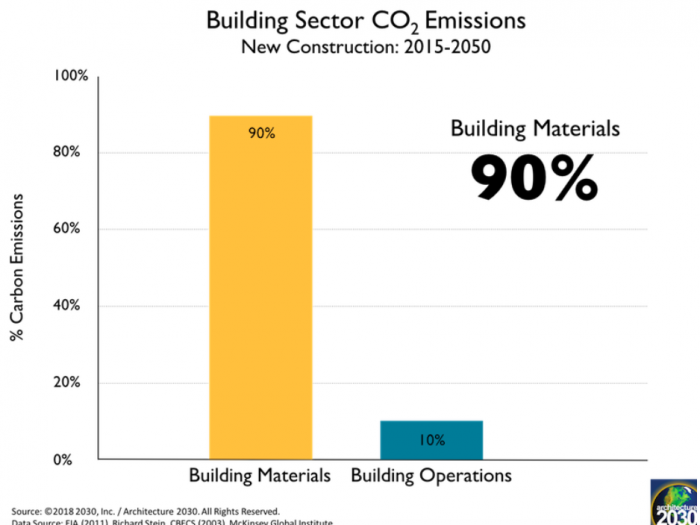
Source: buildinggreen.com
For the last several decades, the energy community has been laser focused on operating energy (and, by extension, emissions). It has largely dismissed embodied energy as the lesser concern. However, in recent years, that has changed. Significant advances in building operating efficiency have shifted the balance. When…
Weekly Newsletter
Get building science and energy efficiency advice, plus special offers, in your inbox.

This article is only available to GBA Prime Members
Sign up for a free trial and get instant access to this article as well as GBA’s complete library of premium articles and construction details.
Start Free TrialAlready a member? Log in





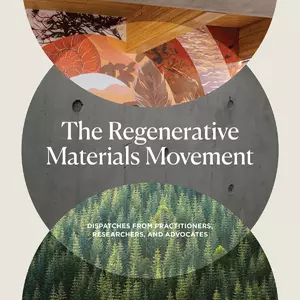
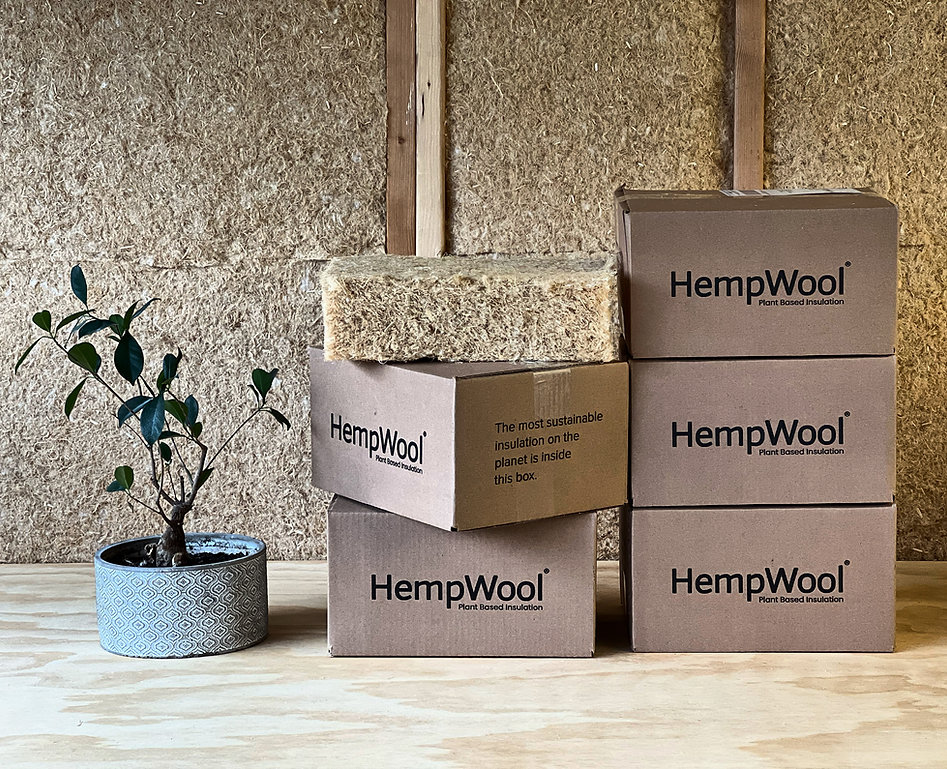
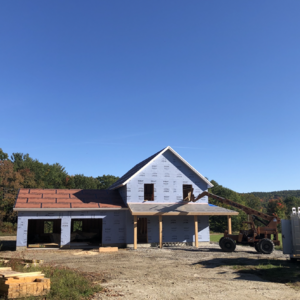
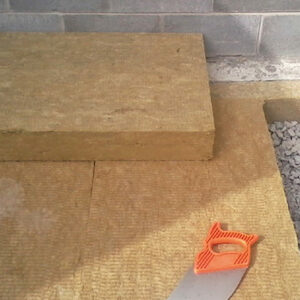






23 Comments
Along with using materials more efficiently, the other important aspect is using less in general. This doesn't resonate as well with some people, but it is important to make the building as small as feasibly possible.
No argument there, Robert! You're singing my song.
If I understand correctly, some buildings can be carbon positive, protecting wood from rot and locking up the carbon embodied as the tree grew.
So how would one know when adding more wood is better than adding less? Does it ever make sense to overframe to store more carbon in the structure? Or at least not to worry about overframing?
I can't imagine a situation where over-framing would be a good thing. Yes, it would store more carbon for the life of the structure, but it would also compromise thermal performance over the life of the structure -- unless it were in the interior walls only. But even then, no -- because wood left in a healthy, sustainably managed forest is likely far more productive than a tree that's been cut. And I just can't fathom a scenario where using more than we need of just about anything would be a sustainable strategy.
I have related questions/comments to #2, but coming from a different angle. In comparing wood to other building materials like metal and concrete, often the carbon cost of manufacturing and transporting the metal and concrete is considered. Can I assume that the carbon cost of harvesting, transporting, and milling wood products are summed up similarly? In addition, how does one deal with the implication of removing a growing tree from a forest instead of allowing it to continue to grow and store more carbon over a longer lifespan? So coincidently counter to comment #2, as I see it, carbon storage in a growing tree is always advantageous to carbon storage in a house built from trees because the carbon storage can continue to increase. Where is the flaw in this line of thinking?
I'm with you, Antonio, while fully acknowledging that the whole issue of carbon storage in wood and other organic materials is tremendously complex. There's a lot of discussion and work around this in the Embodied Carbon Network, part of the Carbon Leadership Forum. Well worth joining if this subject interests you! A lot of very knowledgeable and committed people contribute.
James and Antonio,
You are revealing the complexity of this topic. One must enter the interdisciplinary and complex world of forest management and the forest products industry. In short: it's all very situational.
There is some expert disagreement on these matters (or at least calls to continue honing the Life Cycle Assessments (LCA's) of wood-built structures. There are also uncertainties about how a large shift from steel/concrete construction to mass wood construction would play out at scale in terms of forest management, supply chain efficiencies, and other pressures on forest ecosystems (e.g. wildfires).
"carbon storage in a growing tree is always advantageous to carbon storage in a house built from trees because the carbon storage can continue to increase."
This is not necessarily true for the reasons I'm hinting at above. It's about forest systems management, not about any one tree. It also becomes intertwined with energy production and other wood product economies since wood waste is often used for generating heat/power and/or making other products like paper.
On the other hand, I would be weary of 'over-framing' a residential structure simply to add more wood mass to it. For starters, the carbon accounting on that is too uncertain, and perhaps more importantly, if you are going to add material to a building, it should be material that is serving a purpose. Over-framing implies it is redundant and likely robbing other materials of their purpose, (i.e. reducing your thermal performance). Consider wood-fiber/cellulose insulation? Yes that likely makes carbon sense.
Here's a couple interesting resources, but this is a topic worth seeking a diversity of perspectives on. Perspectives are ever changing.
https://www.sierraforestlegacy.org/Resources/Conservation/FireForestEcology/ThreatsForestHealth/Climate/CI-Ingerson-TWS2009.pdf
https://www.invw.org/2020/05/04/scrutinizing-claims-that-high-rises-built-from-wood-fight-climate-change/
https://www.fs.fed.us/rm/pubs_other/rmrs_2010_ryan_m002.pdf
Thanks. I've seen a few of those and try to follow, but as you say it's complicated, I think these lifecycle analyses are important, hope to hear more about them on GBA over time :)
For clarity, I want to add that my concern is not any single tree. My use of the word "tree" is meant to represent the mass of trees that must be harvested to support wood based construction. On the most fundamental level, I only want to understand how the carbon accounting for concrete and steel is assessed compared to the carbon accounting for wood. Are the experts considering all the myriad pieces and their complexities in a way that does not tilt the scales toward or against one material? I believe I follow why Yost favors wood over steel and concrete--the high embodied carbon argument. One issue I am seeking to better understand is how well understood is the carbon capture loss from cutting down trees (which capture carbon while they are alive). Even in a well stewarded forest, it would seem unlikely that a newly planted tree would capture as much carbon as the much more mature tree it replaces. Are FSC forests meeting a net zero or net positive carbon capture standard?
In general, LCAs on any material or system account for the transport and processing emissions. However, as Tyler's comments reflect, it's pretty hard to generalize. There was an excellent panel on this at the recent Carbon Positive RESET! Teach-In hosted by Architecture 2030. There may be slides or recordings available and if so, I would encourage you to review them. At a really macro level, though, considering wood vs. steel vs. concrete, there's only one of those that it's possible to grow more of. So we need to be conserving all our resources (i.e., using no more than necessary), using them to their fullest potential, and ensuring the most sustainable possible management regimes for our renewable resources -- not just trees, but the complex forest ecosystems in which they grow, and which perform many other ecological services that matter to us and other species.
Ann, one can grow more trees. But steel and concrete can be reused or recycled. Moreover, steel is more likely recycled than concrete. Though, where I live, the local gov't "encourages" that concrete waste from building demolitions be separately disposed and sent to crushing facilities for recycling. Steel, on the other hand, is purposely separated at the waste processing facility. Yes, I realize that not all locales prioritize sorting and recycling. Interestingly, wood materials from building demolitions go to the landfill. I have wondered if this is the case precisely because "it's possible to grow more of" it.
"One issue I am seeking to better understand is how well understood is the carbon capture loss from cutting down trees (which capture carbon while they are alive). "
Antonio,
You seem to be making an assumption that there are only two alternatives: either cut don the tree to make wood products or leave it to continue absorbing carbon. But in fact, most of our trees are now in managed forests so leaving the tree is not really an option - It's going to be cut down for something. It seems much more appropriate to measure the carbon cost of going from a tree standing in the forest to the finished lumber installed in your house, compared to the equivalent for mining, manufacturing and installing similar concrete or steel alternatives. We can certainly discuss the fact that some carbon is sequestered for a time in the lumber itself. Even performing that analysis is wicked complicated and full of assumptions. I don't think it's fair to charge the manufactured lumber with the "lost opportunity" for additional carbon sequestration in the tree that may or may not have remained standing for an indeterminate time. There's also some studies that are showing that young trees sequester more carbon per acre than mature ones, so it gets even more complicated.
Peter, first on the point of young trees sequestering more carbon, please see the article suggested in comment #13; I believe your assertion is overly stated. Or see my comment #14 for quotes from the article.
We will have to disagree on whether it is as you say "fair to charge the manufactured lumber with the 'lost opportunity' for additional carbon sequestration." That is a matter of opinion. However, if net atomospheric carbon is the figure of merit, then the opportunity cost of additonal carbon sequestration should be accounted for in my opinion. When there is a penalty for (steel and concrete manufacture and processing) adding carbon to the atmosphere, how can there not be a penalty (in wood use) for the removal of systems of mass carbon sequestration? Moreover, you have misinterpreted me in your assessment that I believe we must "either cut do[w]n the tree to make wood products or leave it to continue absorbing carbon." Certainly, I understand the objective is to make an informed comparison between wood and alternatives. In fact, in my initial comment, I tried to make clear that my thoughts were aimed at "comparing wood to other building materials like metal and concrete." SO, in fact, as you stated, "measur[ing] the carbon cost of going from a tree standing in the forest to the finished lumber installed in your house, compared to the equivalent for mining, manufacturing and installing similar concrete or steel alternatives" is completely congruent with the stated objective in my initial comment.
Watching Grand Designs last night (S15E2: Haringey), up on Netflix now. It's amazing to see the intense use of masonry and concrete in UK building. I mean block walls, sure, but this particular episode showed pre-fab concrete beams for the flooring system. Oh, and we'll fill the gap between them with dense concrete blocks as well. Oh, and then we'll screed a cement mix floor over the top. And concrete stucco. Oh, and concrete roof tiles as well (why not!). Any comparisons of embodied carbon loads across national building cultures?
I'm not sure how definitive the science is in regards to how precisely one would maximize forest carbon in the long-term. I think there are so many factors that go into it. As Peter suggests, there is some evidence that younger growth actually sequesters carbon at a faster rate.
https://masswoods.org/sites/masswoods.org/files/Forest-Carbon-web_1.pdf
It's more complicated than that of course. For one thing, forest soil is a substantial carbon pool, so if the harvest was aggressive and/or conditions unfavorable, there could be soil carbon losses that take a lot of time to recoup. There are also losses from the initial harvested carbon to the carbon that actually gets sequestered for any substantial amount of time (think limb wood, sawdust, off-cuts, etc. though there may be a power or chip market for those).
Additionally, carbon is obviously burned throughout the production process, so there is an initial deficit that needs to be repaid. (This time deficit is perhaps reason to emphasize not only choosing wood, but choosing less of everything).
So the new-growth forest is likely a leg behind its older growth counter-part in the sense that it has a deficit to pay back, though it may sequester more vigorously. Invasive plant species can also overtake new cuts in certain areas and reduce sequestration rates.
Suffice to say, it's probably unlikely that our current timber management practices maximize forest carbon sequestration. But we might not have to in order to see a benefit from using wood since we are using wood in place of other materials with their own carbon penalties. Its an 'on balance' calculation. Not using wood implies leakage into other sectors.
Indeed, using more wood (and less other stuff) to build out our infrastructure should go hand and hand with a discussion on sustainable forestry management. It is a lynch pin to the concept of sustainable material use when those materials compose a living biome (what doesn't eh?).
Interesting suggested read, Tyler (https://masswoods.org/sites/masswoods.org/files/Forest-Carbon-web_1.pdf), but according to the article, it can take a human lifetime for a forest to reach its peak carbon sequestration rate. So, a young forest is not that young on a human time scale. As stated:
"The rate (or amount and speed) at which a forest sequesters carbon changes over time. In the northeastern United States, carbon sequestration typically peaks when forests are young to intermediate in age (around 30–70 years old)"
Further,
"One important thing to recognize is that the forest might actually be a source of carbon immediately following a disturbance, as rates of tree growth, although rapid, are unable to counteract losses of carbon due to the decomposition of organic matter in the soil.... It
generally takes 10–15 years before there is enough forest growth to shift a disturbed area
from a carbon source to a carbon sink."
Antonio,
I suppose I'm not exactly sure what your point is, but you are correct that forest management with timber production as the sole objective will likely not maximize forest carbon sequestration (as stated above).
To your point, longer 'crop' rotations are beneficial for carbon sequestration—not to mention many other ecological functions. Most, if not all, foresters understand this and are capable of making management decision based on this if they so choose, or if the landowner chooses. The catch is whether or not our economics allow for this knowledge to be practiced often in reality. Here in Maine at least, the wood mills are hungry to be stoked with fairly short cycle crop. Not because that crop is necessarily the highest value per mass or land area, but because that's what is needed to keep the market afloat.
It is an interesting question to ask (as I think you are): does the lost carbon sequestration potential of harvesting timber from a growing forest undercut the alleged benefits of replacing steel and concrete with said timber? While the answer is clearly 'it depends', I think as a generalization, the math works out to a fairly resounding yes. How resounding that 'yes' is does depend on forest management decisions. If you see evidence that suggests the answer is a more likely 'no,' I would be pleased to view it.
(In simple terms, the math looks like: net carbon sequestration loss from harvesting timber + carbon debt from the harvest/production process is (usually) less than the carbon debt accrued by producing steel or concrete to fulfill the equivalent needs.)
There's plenty of factors that could tip this balance. It seems conceivable that steel could theoretically be made and recycled in such an efficient manner that we would be better off leaving forests largely uncut. We should of course continually re-evaluate.
Other forest management babble:
Some folk feel we should have distinct management practices for 'forests' and for 'timber stands'. In many ways/places we already do. The argument is that 'forests' can/should be managed primarily for things like carbon, habitat, recreation, etc., while timber stands can/should be managed to maximize product value and sustain a viable market (thereby freeing up more forest land for those other benefits).
I'm not sure it needs to be that black and white, and it is possible to take a middle path where one allows some cutting of 'forests' but with carbon, habitat, and recreation in mind. Some areas probably should be left more untouched. Other areas should perhaps manage for maximum timber value. Other areas can probably fall somewhere in between. It's certainly way above my pay-grade to posture a guess at how to best manage at such scale.
cheers
Tyler, if you examine my original post, you will see that I was not so much making a point as I was posing questions. I pose these questions because of the strong assertions in favor of wood over alternatives. My objective was to learn what component factors are aggregated in these assertions. I even went so far as to question this community to point out the flaws in my reasoning. Having said all that, I am a bit surprised at the response to my questions. I think strong assertions should be an indication of strong supporting evidence. I believe you would agree that the following statement in answering your self-posed question (of whether it is a net benefit to favor forested wood over steel and/or concrete) from your comment #17 is a strong asserion: "...it depends [but] I think as a generalization, the math works out to a fairly resounding yes." Thus, I am somewhat surprised as the questioner that I am asked to point to evidence to counter this assertion, though I have not been pointed to favoring evidence.
Though not educated in forestry science, I am a scientist by training. When I hear bold and broad assertions, I am initated to ask questions. I think those of us who believe that our actions on this planet are consequential to the atmosphere and environment should be prepared to back up our assertions with more than further assertions. Is carbon sequestration and comparing carbon capture from younger trees to carbon capture from more mature tree stands complex? I would think yes, absolutely! Yet, so is every other component that goes into an analysis of the benefits of one material over another.
I'll close with two relatively easy questions:
(1) In a "short cycle crop" like you mentioned in your comment #17, how long is the cycle from planting to harvest? If the answer is not significantly more than 30-70 years, based on the article suggested by comment #13, I would reconsider arguing that young forests are better at sequestering carbon than more mature forests.
(2) In response to the last paragraph of your comment #17, I do not see this as "black and white." Will you please see my comment #15, so that I don't have to repeat a point?
Antonio,
I apologize if the tone has not come through kindly.
A healthy questioning and demanding of rigor is great, but bear in mind this is not a scientific journal review hub.
At this point, I am feeling a bit grated myself.
>"I am somewhat surprised as the questioner that I am asked to point to evidence to counter this assertion, though I have not been pointed to favoring evidence."
I suggest that what you seek is at your finger tips and guideposts have been placed before you.
We're all simply sharing thoughts. Your questions are good ones, but from my vantage point, the same question is being asked repeatedly with little apparent attempt at investigating further the complexities of 'the answer.' And thus, it seems you are either trying to make a point or grind an ax. This is probably not your intent, but it is the feel that comes across to me.
If you read all the links provided, and use them (along with the body content of everyone's posts) as springboards for your own investigations, I think you will find what you seek. My challenge to provide 'evidence to the contrary' was a genuine attempt to see what another critical thinker may dig up and bring to the table.
I've tried to answer your questions by further contextualizing them. Ultimately, what you seek is in scientific literature. And I'll repeat, "this is a topic worth seeking a diversity of perspectives on." For what it's worth, I am not a forester. My education is as an environmental scientist. I have hands-on experience in small-scale selective timber harvest, and my career path is in land stewardship/management.
I'm pretty sure I don't have 'the one' piece of literature that is best suited to answer your question directly and succinctly. I thought a couple links I provided came somewhat close. My choice of language in saying 'resounding yes' was admittedly at odds with all the 'it depends' statements, but it was borne from the fact that if you research this subject, there seems to be a fairly broad consensus.
In case it hasn't been made abundantly clear, I do believe we could make the equation far more favorable for wood if the forestry management aspect was improved upon, on average. Additionally, there is no accurate account of actual measured carbon LCA's of timber products since we don't have those measurement tools. It's theory and calculation. And as such there is always a bit of ambiguity. The 'bold assertions' here are based on what appears to be the current scientific consensus.
What I probably should be saying here is this:
I am unable to provide (in the amount of time I wish to devote here) the needed scientific evidence to properly buttress such a bold statement as 'wood has lower embodied Co2e than steel and concrete'. I have read plenty of papers/articles that assert this is generally true, and explain underlying principles and show some basic calculations. But to provide the needed level of detail able to hold up against rigorous scrutiny, I am not in a position to do that.
Here's some more links that, at the least, makes this broad assertion about wood:
https://blogs.umass.edu/natsci397a-eross/what-building-material-wood-steel-concrete-has-the-smallest-overall-environment-impact/
https://awc.org/pdf/greenbuilding/life_cycle_analysis.pdf
https://www.awc.org/pdf/education/gb/ReThinkMag-GB500A-EvaluatingCarbonFootprint-1810.pdf
Tyler, I certainly do not have an axe to grind here. If it appeared that way, I offer apologies to you and other readers. I am not a fan of internet trolls. Since it appears that I may have been mistaken for one, I will end my posts with this one.
I will also acknowledge that I share at least a "belief" that concrete construction is more carbon intense than wood construction. But, honestly, I could not articulate with any numerical depth why I should believe this. Perhaps you are correct that my expectations of rigor may have been high for this forum, but those expectations were based on reading many authoritative readers' comments on GBA over the years. I will take your advice and do more independent reading; I do not shy away from independent study. For example, I read the suggested article in comment #13 (though my impression seems to have been somewhat different from what was intended by the poster). Thanks for the conversation.
For what it's worth, I did not think you were trolling. I rather appreciate your deep thinking on the matter. I was merely confounded by the insistence to focus solely on maximizing forest C sequestration as if to imply that if we did so, the larger equation would be balanced more favorably than managing for some timber. My intention from the get-go was to suggest that maximizing forest C is but one part of the equation. Moreover, it is probably a part we can tweak (improve upon) whilst continuing to produce timber.
My apologies about the link in comment 13, for possibly leading astray. That article was not intended to be in answer to the questions you were asking. It was intended as a primer on the forest carbon cycle. 30-70 years of age is young for a forest, whether or not it is young for a human. Leaving forests untouched would obviously, (short of natural disturbance such as fire), lead to forests of much older age. Note too that there are other publications on forest C cycle that take slightly different approaches and draw slightly different conclusions to that paper. To be sure, I think the science is a work in progress.
In the big picture, we certainly should ask ourselves what unfettered economic growth (product demand at least) and/or a massive transition away from steel/concrete towards wood-built commercial structures would do to prospects of sustainable forest management. Would the carbon equation still balance out favorable? I honestly don't know. There are certainly limits and thresholds to what forests can provide, especially when other ecological health indicators are considered.
I think the notion that 'wood is better,' while overly simplified, can perhaps suffice when one's scope is residential construction and at this point in time.
Respect
Wow - great exchange here.
I think it is interesting that in our discussion of carbon sequestration in wood/trees that the current wildfire situation in the west did not come up. At the end of last week, those fires were brought home to me when on an early morning walk, they rising sun was a glowing pink-orange ball in the sky--because the western smoke had just made it to Vermont...
We need to manage all types of wood carbon storage: in forests being harvested, on heavily forested state and federal lands, and in our forest-urban interfaces to keep that carbon sequestered...
Pete
As a minimalist, I always proposed smaller buildings and less materials. I was surprised that this suddenly is market now as "advanced framing". I never understood why you would use more wood than necessary. Nevertheless, I am happy to see this approach gaining momentum.
Log in or become a member to post a comment.
Sign up Log in